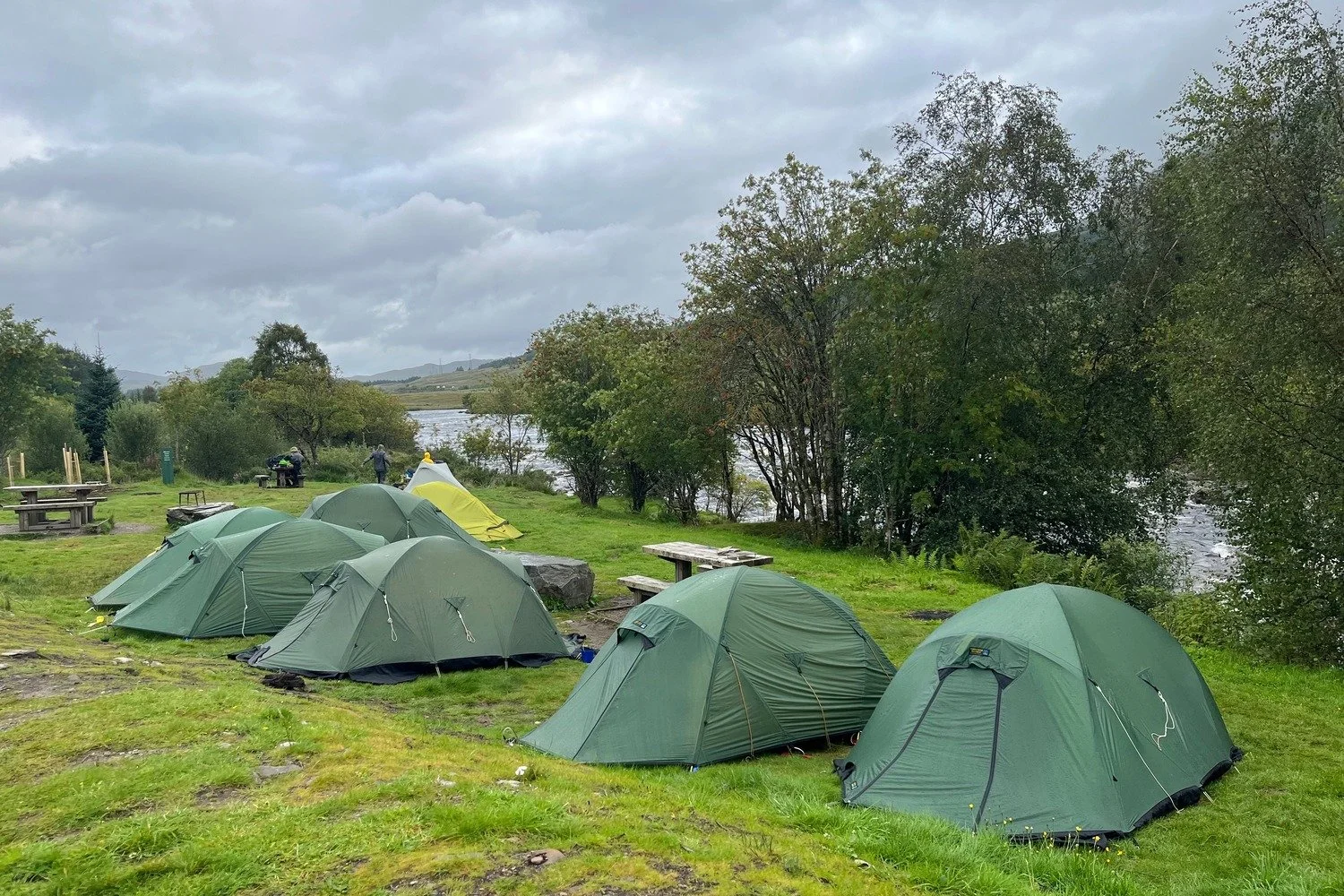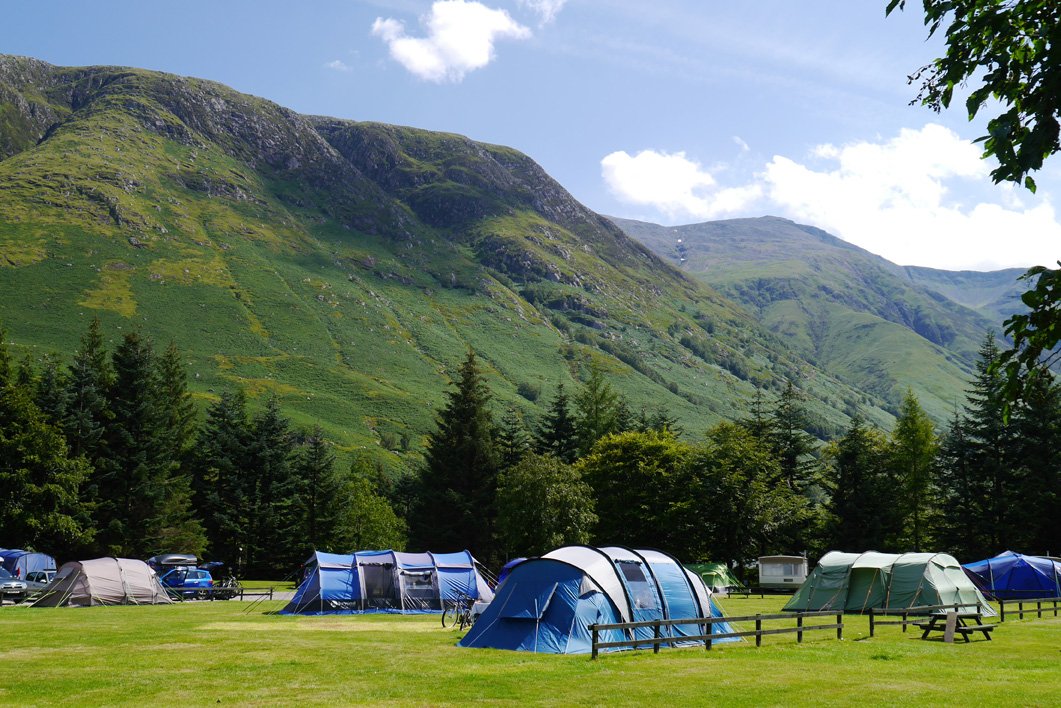Camping along the West Highland Way is a rewarding way to experience the trail, especially if you're looking for a more budget-friendly and nature-focused option. There are several camping options available, from official campsites to wild camping. Here’s an overview:
1. Official Campsites
There are several designated campsites along the trail, which provide facilities such as toilets, showers, and sometimes kitchen areas. These campsites tend to be located near towns or at popular stopping points along the route. Here are some key campsites along the West Highland Way:
Balmaha (Loch Lomond) – One of the most popular campsites, offering good facilities with beautiful views of Loch Lomond.
Inverarnan – Located near the Inverarnan Hotel, this site offers basic facilities and is a great midway stop.
Tyndrum – A well-equipped campsite with views of the surrounding mountains.
Kinlochleven – Near the end of the trail, this campsite offers good facilities to rest before tackling the final stretch to Fort William.
Bridge of Orchy – This campsite offers great views and is conveniently located for a stopover on the trail.
Glen Nevis Campsite
2. Wild Camping
Legal Status: Wild camping is permitted in Scotland under the Land Reform (Scotland) Act 2003, as long as it's done responsibly and with respect for the environment. This means you can camp in most places, provided you follow the "Scottish Outdoor Access Code" principles.
Best Areas for Wild Camping: Many parts of the West Highland Way are ideal for wild camping, including areas around Loch Lomond, Rannoch Moor, and near Glencoe. However, some sections, like those near villages or sensitive nature areas, may have restrictions or be less suitable for wild camping. Read the official Camping Management Byelaws to understand the specific camping restrictions and permit requirements.
Important Considerations:
Campsites vs Wild Camping: While wild camping gives you more flexibility, official campsites offer more security and facilities, making them easier and more comfortable.
Weather: The weather in the Scottish Highlands can be very unpredictable, so wild camping requires good preparation, especially in terms of gear and knowing how to handle the conditions.
Water Sources: Make sure to camp near a reliable water source, but always purify water before drinking.
Respect for Nature: Always camp at least 100 meters away from any buildings or roads and avoid camping on agricultural land or near protected wildlife areas.
Wild camping (bivy) location at Bridge of Orchy
3. Camping Gear
Tent: A lightweight, weatherproof tent is essential for wild camping, especially given the often wet and windy conditions in the Highlands.
Sleeping Bag and Mat: Ensure you have a good sleeping bag suited for the season and a comfortable mat for insulation.
Cooking Equipment: If you plan to cook your meals, you’ll need a stove, fuel, and cooking utensils. Many campsites have kitchen areas, but for wild camping, bring your own.
4. Bivvying
Another option is bivvying, where you sleep in a bivy bag (a lightweight, weatherproof shelter). This is suitable for more experienced hikers looking to travel light. However, it's more exposed to the elements, and you need to be prepared for changing weather conditions.
5. Camping Tips
Plan Your Stops: While you can camp at many points along the trail, some areas may be better for camping than others, especially in terms of terrain, weather protection, and distance between campsites.
Booking Campsites: In high season, some campsites may require pre-booking, especially those near popular areas like Loch Lomond.
Avoid the Crowds: If you prefer more solitude, wild camping is a good option, though it’s still important to camp away from heavily trafficked areas.
Keep It Clean: Always follow the Leave No Trace principles—dispose of waste responsibly, pack out all trash, and leave the area as you found it.
Glencoe Mountain Resort Campsite
Summary:
You can definitely camp along the West Highland Way, with both official campsites and wild camping being available. Official campsites provide amenities and a bit more comfort, while wild camping offers more freedom and a closer connection to nature. Just be sure to plan ahead, respect the environment, and bring suitable gear to handle the often unpredictable Scottish weather.





